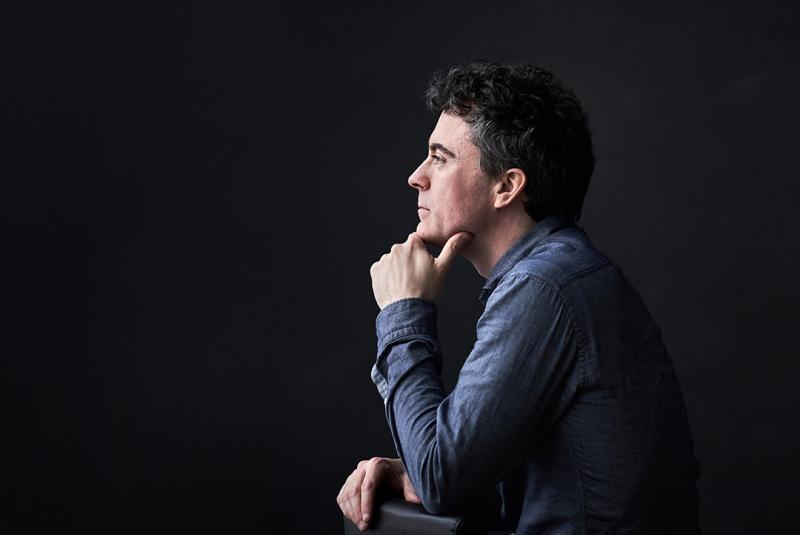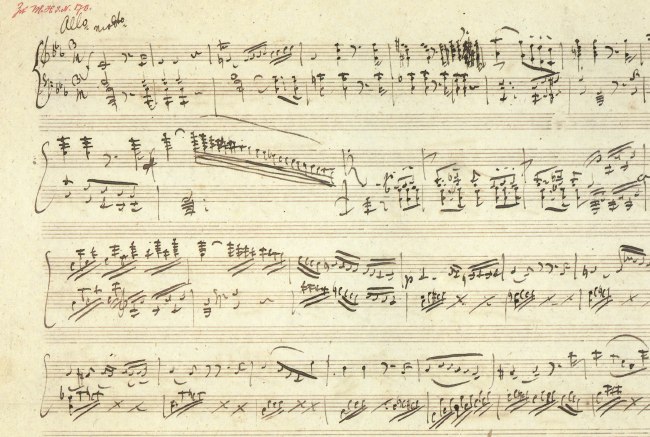Schubert Piano Sonatas 4, Paul Lewis, Wigmore Hall review - feverish and sometimes violent | reviews, news & interviews
Schubert Piano Sonatas 4, Paul Lewis, Wigmore Hall review - feverish and sometimes violent
Schubert Piano Sonatas 4, Paul Lewis, Wigmore Hall review - feverish and sometimes violent
Explosive new insights in the pianist's latest interpretations of the last three masterpieces

“Death doesn’t scare me at all,” said my friend Christopher Hitchens during our last telephone conversation. “After all, it’s the only certainty in life. Dying, however, scares me shitless”.
However hard one tries to remove these three final sonatas from the narrative of Franz Schubert’s life and imminent death from syphilis when he wrote them, this is inescapably what they are about: fear not of one’s own obliteration, but the process of getting there. But also insolent defiance of obliteration, and validation of life lived.
Paul Lewis’s recordings of these sonatas, and live renderings during the epic two-year cycle more than a decade ago, conveyed an eeriness in Schubert – an almost mystical inconsequentiality.
Now, Lewis assails these pieces differently and to shattering effect: febrile, feverish, fervent and frenzied – sometimes even violent.
The opening bars of D958 in C Minor (manuscript pictured below) – the hallmark key of death – were a rush across the keyboard: before the end, there is urgency, not repose. But this is checked by a moment of reflective song: while we live, we must do just that – savour the beauty in these notes. And here was the existential battle that raged all evening, and through all three works: between terror at the passing of final time, and affirmation – through melody and song – of what little life remains, and a will to live it to the full, even when looking back on what was but should not have been, and vice-versa.
And here was the existential battle that raged all evening, and through all three works: between terror at the passing of final time, and affirmation – through melody and song – of what little life remains, and a will to live it to the full, even when looking back on what was but should not have been, and vice-versa.
On the Sunday night: another Wigmore Hall excruciation, following the recent embarrassment of Andreas Schiff with screeching microphones he had to smash against the walls to shut them up. Announcements about hearing aids in this venue are a hallmark joke, but now someone’s gadget emitted an electronic signal that forced Lewis to abandon the music, leave the stage, return, and continue, palpably irked; concerts at this level are séances, and the spell inevitably broken. So that night two of the programme was an assertion of Schubert’s genius and Lewis’ talent against crass mediocrity out here.
The pensive Adagio played like a tip-toe forward, cautious surrender with pauses stretched (perhaps?) painfully longer than scored. The movement ends in a moment of stolen peace, before the Menuetto, which felt almost Proustian in its reflective stops and restarts between present and recherche du temps perdu.
The final Allegro brings a different mood: Lewis wrestling the quirks, sharp corners and percussive chords with almost demonic intensity – all the more so on night one, uninterrupted and in his stride – hammering at the keys. At once: terror and resistance, willing the music to outlive the flesh – and for us to bear witness to its endurance, right here and now. The interruption had done its damage on Sunday night, lacking the enthrallment of the first through no fault or doing of the artist, but by now the music had found a point of no return.
The Sonata in A, D959, also opened ablaze, the songful melody all but devoured by the burst and flow of notes, before settling into its lyrical reflections, regrets maybe. But while this opening Allegro was done as romantic Schubert, Lewis proceeded into the Andantino with something entirely new: a turbulence bordering on violence – especially on night one: percussive punctuations to reveal a modernist Schubert; apparently broken notes and crashing chords reaching not back to Beethoven, as is so often said, but forward into the dissonant future. Were these sounds done in paint, Lewis is taking Schubert from a more familiar analogy with Caspar David Friedrich, towards Edward Munch.
And always this heave between surface and undertow, life still lived and death not far: melodies like leaves upon the sea, floating atop rip-tides of extinction, but floating nonetheless.
Paul Lewis talks about and plays the Andantino of the A major Sonata
The opening of the valedictory D960 is characterised by that ominous rumble from the nether depths, or far bank of the River Styx. But on the first night, for its first appearance, Lewis gave prominence to the right hand, and the lovely first melody of attestation and affirmation, of life riding the rumble – for now. When the melody comes around again, it does so with both apprehension and determination. But when the rumble returns, it is louder – inevitable, and irrefutable. It insists, but the melody also persists, now at an agonising pace. Throughout, there is this tip-toe: hesitant acceleration towards – then deceleration in recoil from – the finality; perseverance and trepidation, in equal measure.
The Andantino is unbearably but beautifully sad. Life has become a dance with imminent death, slowly with lift and lilt, dignity and defiance: Lewis "playing" the stretched silences, it seems, with as much cogency as the notes between them – especially on night two. The Scherzo has an illuminated lightness to it, suggesting resignation of the bodily flesh.
And the final Rondo brings all that came before it to fruition, played with focus and passion; intensity, vim and vigour: a final impenitence, staring at extinction eye-to-eye – but while we live, we live.
After the Schiff debacle in February, the interruption of Lewis on Sunday night is too much: as these shambles persist, the Wigmore Hall needs to get its act together at this level of music-making, and many in its blasé audience need to wonder whether it deserves the wonders some of us are here to savour.
Lewis’s evolving commitment to Schubert – musical, personal and existential – is an epic adventure down the years just as his rendition of each of these pieces is an exhausting voyage unto itself. Over these two revelatory evenings: life embraces death, and death embraces life, in an unforgettable dance of both, with one another. And yes, Christopher, and all of us: a dance between death and dying.
- Programme 4 also to be heard in Birmingham Town Hall on 11 April. The cycle continues worldwide
- .More classical reviews on theartsdesk
rating
Explore topics
Share this article
The future of Arts Journalism
You can stop theartsdesk.com closing!
We urgently need financing to survive. Our fundraising drive has thus far raised £49,000 but we need to reach £100,000 or we will be forced to close. Please contribute here: https://gofund.me/c3f6033d
And if you can forward this information to anyone who might assist, we’d be grateful.

Subscribe to theartsdesk.com
Thank you for continuing to read our work on theartsdesk.com. For unlimited access to every article in its entirety, including our archive of more than 15,000 pieces, we're asking for £5 per month or £40 per year. We feel it's a very good deal, and hope you do too.
To take a subscription now simply click here.
And if you're looking for that extra gift for a friend or family member, why not treat them to a theartsdesk.com gift subscription?
more Classical music
 Solomon, OAE, Butt, QEH review - daft Biblical whitewashing with great choruses
Even a top soprano and mezzo can’t make this Handel paean wholly convincing
Solomon, OAE, Butt, QEH review - daft Biblical whitewashing with great choruses
Even a top soprano and mezzo can’t make this Handel paean wholly convincing
 Two-Piano Gala, Kings Place review - shining constellations
London Piano Festival curators and illustrious friends entertain and enlighten
Two-Piano Gala, Kings Place review - shining constellations
London Piano Festival curators and illustrious friends entertain and enlighten
 Echo Vocal Ensemble, Latto, Union Chapel review - eclectic choral programme garlanded with dance
Beautiful singing at the heart of an imaginative and stylistically varied concert
Echo Vocal Ensemble, Latto, Union Chapel review - eclectic choral programme garlanded with dance
Beautiful singing at the heart of an imaginative and stylistically varied concert
 Scott, Irish Baroque Orchestra, Whelan, RIAM, Dublin review - towards a Mozart masterpiece
Characteristic joy and enlightenment from this team, but a valveless horn brings problems
Scott, Irish Baroque Orchestra, Whelan, RIAM, Dublin review - towards a Mozart masterpiece
Characteristic joy and enlightenment from this team, but a valveless horn brings problems
 Classical CDs: Voice flutes, flugelhorns and froth
Baroque sonatas, English orchestral music and an emotionally-charged vocal recital
Classical CDs: Voice flutes, flugelhorns and froth
Baroque sonatas, English orchestral music and an emotionally-charged vocal recital
 Kanneh-Mason, Britten Sinfonia, Shave, Milton Court - a grin and a big beaming smile
A pair of striking contemporary pieces alongside two old favourites
Kanneh-Mason, Britten Sinfonia, Shave, Milton Court - a grin and a big beaming smile
A pair of striking contemporary pieces alongside two old favourites
 theartsdesk at the New Ross Piano Festival - Finghin Collins’ musical rainbow
From revelatory Bach played with astounding maturity by a 22 year old to four-hand jazz
theartsdesk at the New Ross Piano Festival - Finghin Collins’ musical rainbow
From revelatory Bach played with astounding maturity by a 22 year old to four-hand jazz
 First Person: Manchester Camerata's Head of Artistic Planning Clara Marshall Cawley on questioning the status quo
Five days of free events with all sorts of audiences around Manchester starts tomorrow
First Person: Manchester Camerata's Head of Artistic Planning Clara Marshall Cawley on questioning the status quo
Five days of free events with all sorts of audiences around Manchester starts tomorrow
 Goldscheider, Brother Tree Sound, Kings Place review - music of hope from a young composer
Unusual combination of horn, strings and electronics makes for some intriguing listening
Goldscheider, Brother Tree Sound, Kings Place review - music of hope from a young composer
Unusual combination of horn, strings and electronics makes for some intriguing listening
 theartsdesk Q&A: composer Donghoon Shin on his new concerto for pianist Seong-Jin Cho
Classical music makes its debut at London's K-Music Festival
theartsdesk Q&A: composer Donghoon Shin on his new concerto for pianist Seong-Jin Cho
Classical music makes its debut at London's K-Music Festival

Add comment